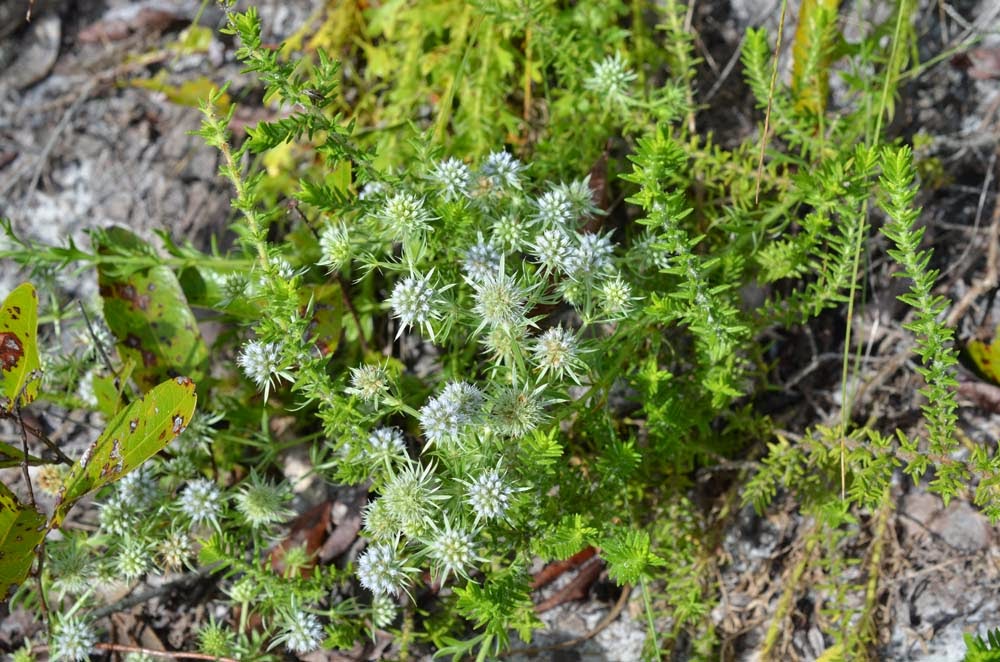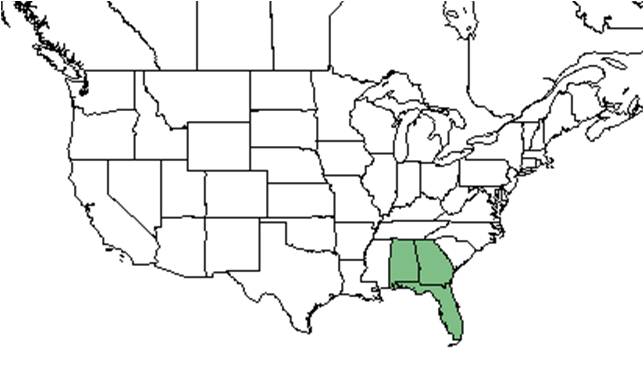Difference between revisions of "Eryngium aromaticum"
KatieMccoy (talk | contribs) |
|||
| Line 3: | Line 3: | ||
{{taxobox | {{taxobox | ||
| name = Eryngium aromaticum | | name = Eryngium aromaticum | ||
| − | | image = | + | | image = Eryn_arom.jpg |
| − | | image_caption = | + | | image_caption = Photo by Wayne Matchett, [http://www.spacecoastwildflowers.com SpaceCoastWildflowers.com] |
| regnum = Plantae | | regnum = Plantae | ||
| divisio = Magnoliophyta - Flowering plants | | divisio = Magnoliophyta - Flowering plants | ||
Revision as of 21:09, 19 January 2016
| Eryngium aromaticum | |
|---|---|

| |
| Photo by Wayne Matchett, SpaceCoastWildflowers.com | |
| Scientific classification | |
| Kingdom: | Plantae |
| Division: | Magnoliophyta - Flowering plants |
| Class: | Magnoliopsida - Dicotyledons |
| Order: | Apiales |
| Family: | Apiaceae ⁄ Umbelliferae |
| Genus: | Eryngium |
| Species: | E. aromaticum |
| Binomial name | |
| Eryngium aromaticum Baldw. | |

| |
| Natural range of Eryngium aromaticum from USDA NRCS Plants Database. | |
Common name: Fragrant eryngo
Contents
Description
E. aromaticum is a low growing, perennial herb that can be found as a basal rosette of slightly spiny, deeply dissected leaves through out most of the year. It has a carrot like taproot[1]. Leaves are simple and alternate[2].
Distribution
It is found throughout the peninsula and panhandle of Florida, along with parts of Georgia and Alabama[1].
Ecology
Habitat
It can be found in well drained upland habitats[1].
Phenology
It produces thistle-shaped flowers arranged in umbels and achene fruit[2].
Pollination
The following Hymenoptera families and species were observed visiting flowers of Eryngium aromaticum at Archbold Biological Station (Deyrup 2015):
Halictidae: Lasioglossum placidensis
Sphecidae: Tachysphex similis
Vespidae: Stenodynerus fundatiformis
Use by animals
Used as larval food by the Eastern black swallowtail butterfly[1].
Photo Gallery
References and notes
Deyrup, M.A. and N.D. 2015. Database of observations of Hymenoptera visitations to flowers of plants on Archbold Biological Station, Florida, USA.
- ↑ 1.0 1.1 1.2 1.3 [Native Florida Wildflowers]Accessed: December 7, 2015
- ↑ 2.0 2.1 [Hortipedia]Accessed: December 7, 2015